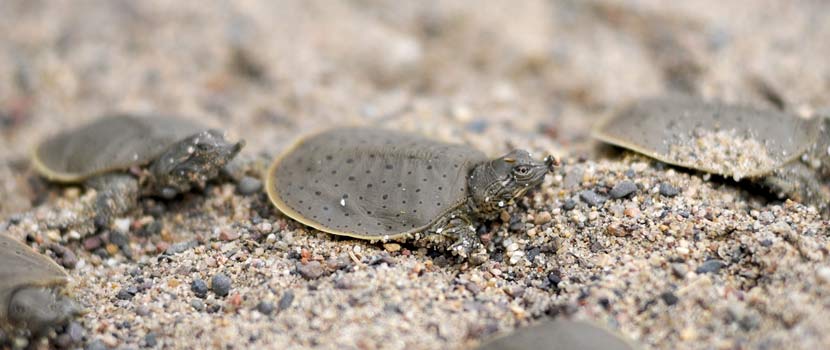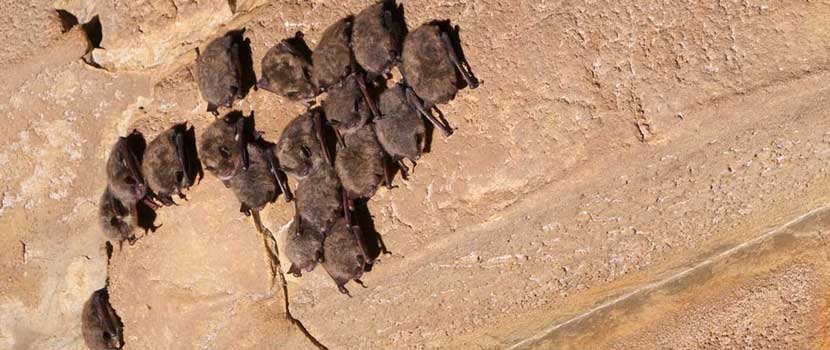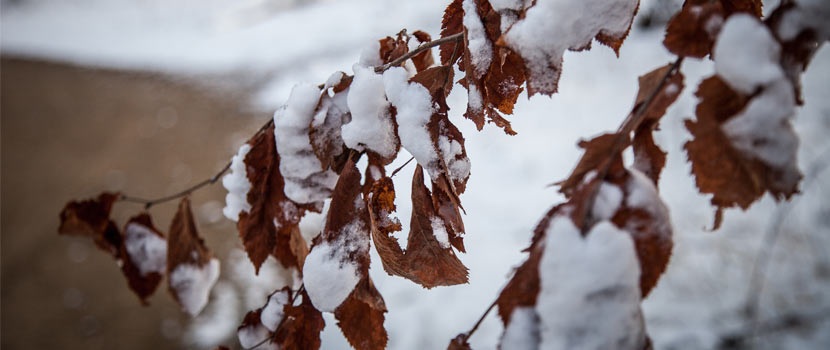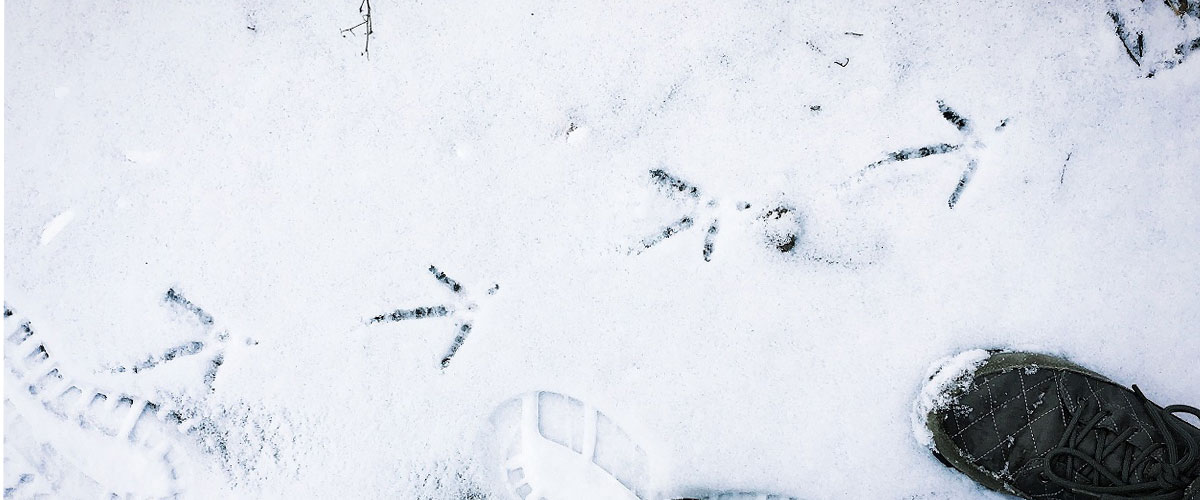
Animal tracking is a fun way to spend time outdoors. Signs from the past help tell us the who, what, where, and when of the animal world.
Tracks are clear indicators that a critter was there, and the more time you spend observing, the more you will learn and see. One way to track critters is by looking for footprints, and snow in winter makes this even easier.
Here are some common tracks you may spot in our parks and surrounding areas.
DEER
Deer tracks can be spotted often and they are easily identified as white-tailed deer; other animals with split hoofs include mule deer, elk, moose, pronghorn and pigs, but none of these live in the wild in the Twin Cities area. White-tailed deer tend to travel along common pathways called deer or game trails. The size of the track can help determine the age and sex of the animal.
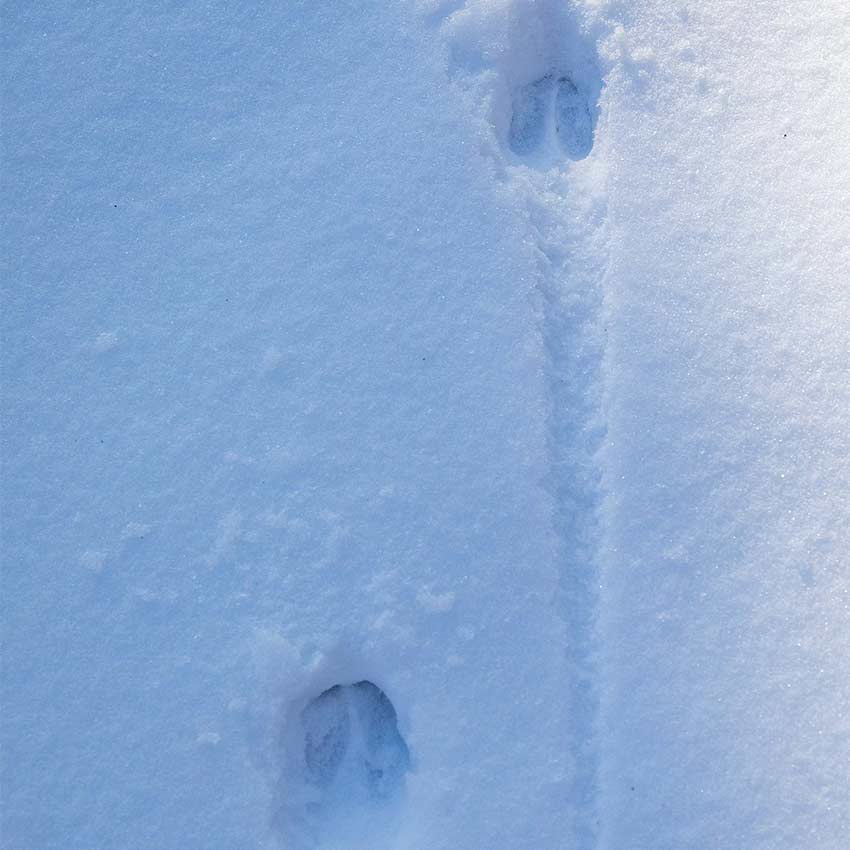
TURKEY
Turkey tracks are easy to identify but can be confused with a sandhill crane’s. Turkeys almost always have multiple sets of tracks, as they travel in larger flocks (except occasionally during the spring breeding season). They will have three toes forward, and their back toe does not always register. A sandhill crane will always register their back toe and their toes are skinnier and pointed without bulbs.
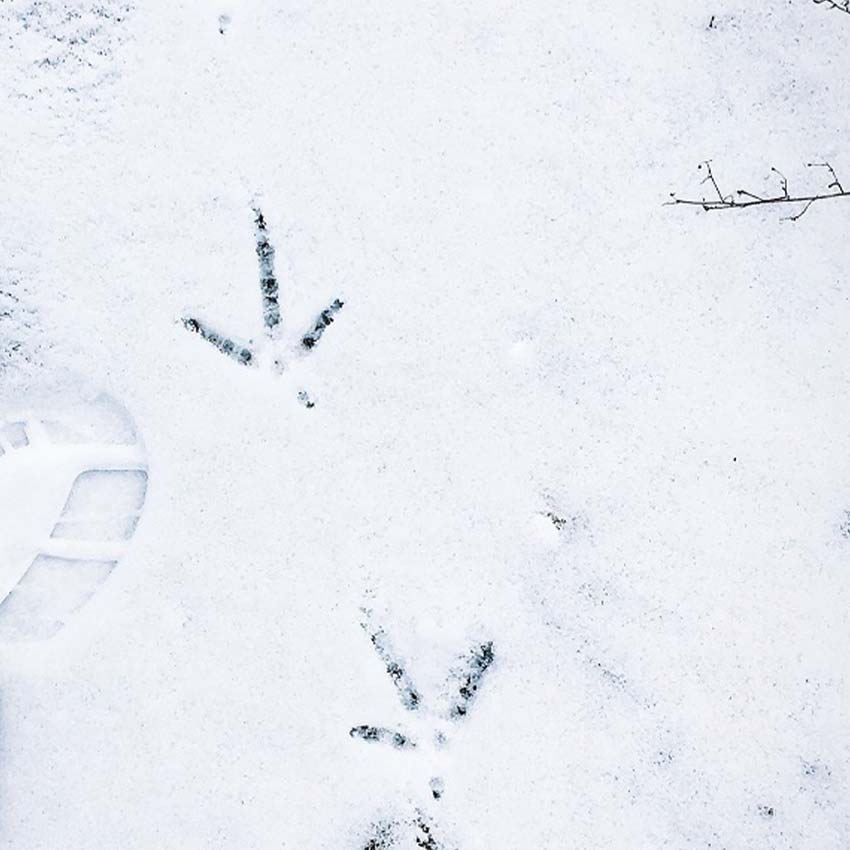
COYOTE
Coyotes are very common in the Twin Cities. You may hear them and you likely will not see them, but you can always find their tracks. They are very secretive and smarter than people give them credit. A coyote print is triangle in shape and unlike a domestic dog’s print, a coyote’s toenails are often faint or absent on the two outside toes. The nails on the inside toes almost always register, are longer than a domestic dog’s, and sometimes point towards each other.
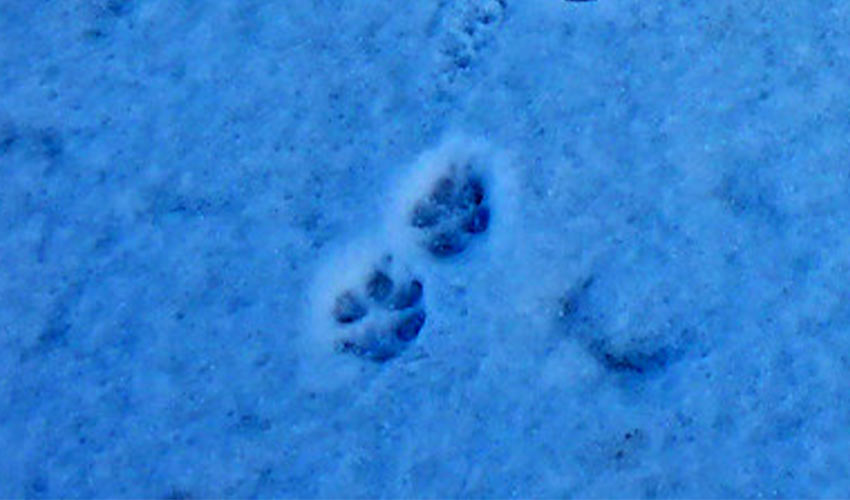
OTTER
Otters are very playful and you can find their slides in the snow, on the ice or on a steep incline. The prints of an otter can look like a fisher, but if you look closely you should see webbing between the toes. This is especially true of the hind foot, which is larger than the front foot on an otter (the opposite is true for a fisher).
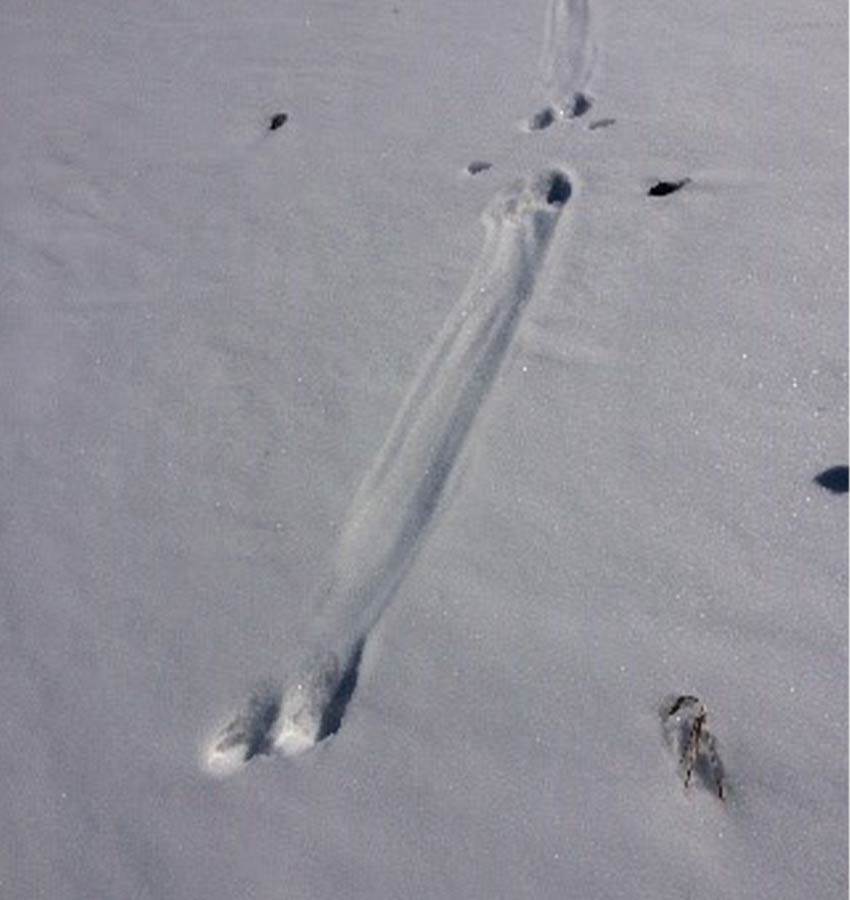
MINK
Mink tracks can be found near streams as they are strongly associated with water, unlike their smaller cousin the weasel. Front feet of mink tracks are larger and almost as wide as long. They have pads that are mostly fused together and if registered (as shown in the picture below) it forms a larger heel.
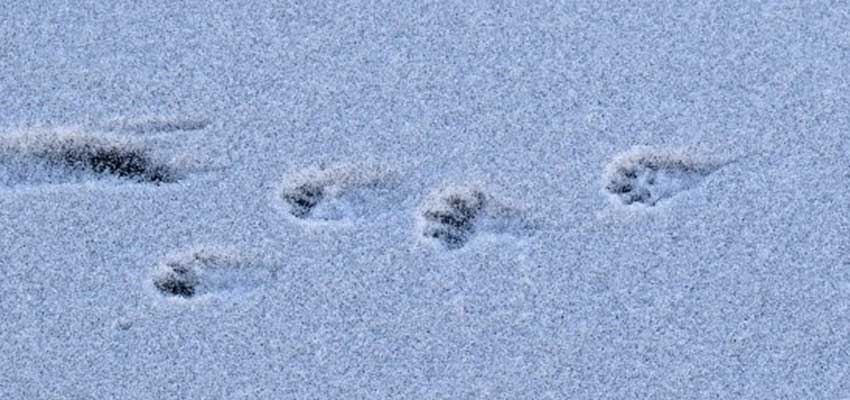
GRAY SQUIRREL
Gray squirrels are active all winter and a great time to find their tracks is during a warm up. They are a tree squirrel so you can find tracks coming from the base of trees. The front foot has five toes, but one toe is a small thumb so only four show up in a track. The hind foot has all five toes showing in a footprint. They have skinny toes like other rodents and their tracks will be over an inch in width and length, with the hind foot being larger.
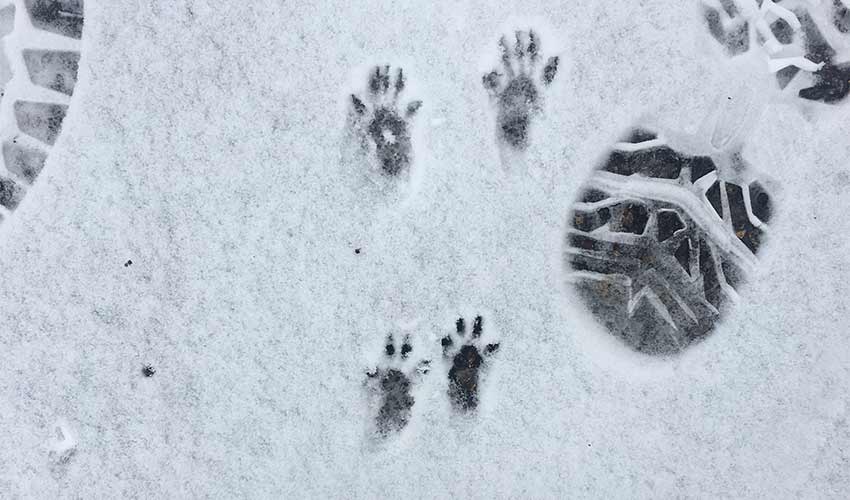
TRACKING FOR RESEARCH
Animal tracking can be more than simply finding prints in the snow, too. Wildlife biologists use tracking technology to learn more about animals and their lifecycles.
One way is using a radio (also called a transmitter) that is attached to the animal that sends out a signal. Biologists then use a receiver to find the signal and eventually locate the animal. Once an animal is located, data is recorded and/or steps are taken to protect nesting sites.
New GPS technology makes it possible to follow animals using satellites or cell phone towers. This data helps determine migration patterns, how animals use an area and more.
SNAKES
Bullsnakes were tracked in the 1990s, with radio devices surgically implanted by a veterinarian. These snakes (Minnesota’s largest) were relocated from Sherburne National Wildlife Refuge to the planted prairie in Crow-Hassan Park Reserve. With a growing population, it is evident that this reintroduction has been a large success.
Today, we are similarly following a small reintroduced population of plains hognosed snakes. I can only hope that this species ends up as successful as the bullsnake has.
TURTLES
Turtles were next, with radios placed on female Blanding’s turtle backs. This is still done today to track this state-threatened turtle and monitor them for nesting behavior. Once a nest is confirmed, it is covered with a screen to keep predators from raiding the eggs.
Spiny softshell, painted and snapping turtles were also tracked for the Medicine Lake Urban Turtle project, which answered questions about nesting location, lake usage, what they do in winter, if water quality affects them and more.
BUMBLEBEES
Transmitters are getting smaller and smaller and more and more powerful. Amazingly, with this constantly improving technology, we now can track insects! In 2018, wildlife staff successfully placed radio tags on bumblebees during a pilot study to find nesting locations.
COYOTES AND FOXES
The Twin Cities Coyote and Fox Project is placing GPS collars on coyotes and foxes to learn how they use the Twin Cities area. More information is available at tccfp.umn.edu and on Facebook. This project is in partnership with the University of Minnesota and funded by the Environment and Natural Resources Trust Fund (ENRTF).
Become a Citizen Scientist! If you spot a coyote or fox, report it on iNaturalist. The Twin Cities Coyote and Fox Project is using these reports to help locate animals for potential tracking.
TRUMPETER SWANS
The Interior Population Trumpeter Swan Migration Ecology and Conservation Migration Project is mapping and learning about trumpeter swan migration by using GPS collars. A swan found on Lake Katrina in Baker Park Reserve has since migrated to Iowa for the winter — who knew?! This project is in partnership with the University of Minnesota; visit trumpeterswan.netlify.com to see where these tracked swans are migrating (or not migrating) to.
GET TRACKING!
For additional resources, check out Mammal Tracks & Sign: A Guide to North American Species by Mark Elbroch and mntracking.org.
Animal tracking is a great way to learn about animals — even without seeing them. Footprints can help provide clues for what’s in your neighborhood, and technology is helping scientists learn more about animal behaviors and lifecycles.
The next time you’re outside (especially in winter), ask yourself: What stories do the tracks around you tell?
Banner and archive image courtesy of Alyssa Schauer.
About the Author
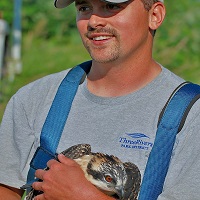
Steven Hogg is the Wildlife Supervisor at Three Rivers Park District and has been working for the Park District for 13 years. After graduating from the University of Alberta with a degree in Environmental and Conservation Biology, he moved to Minnesota to marry his beautiful Minnesota bride. Steven has always had a passion and dedication for wildlife, even when he was young. This passion is what lead him into a career where he strives for the proper orchestration of research, management, and politics to ensure natural resources and wildlife are given a voice. In his spare time, which there is little of with his three kids, Steven likes to farm, hunt, and fish.
Related Blog Posts
9 Things We Learned from the Medicine Lake Urban Turtle Project
By: John Moriarty
Where do spiny softshell turtles go after nesting on the beach at French Regional Park? How far do softshell, painted and snapping turtles travel in the water? Are they active in winter or affected by water quality? Find out what we learned during the Medicine Lake urban turtle project.
How Bats Survive Minnesota Winters
By: Katie Frias
Minnesota is home to seven species of bats, but they don't all approach winter the same way. Read on to learn how bats survive our coldest months of the year.
Why Do Some Trees Keep Their Leaves Through Winter?
By: Paul Kortebein
Now that fall is long past, why are some trees still hanging onto their leaves? Learn what's happening in these trees and why it may be beneficial to them.
